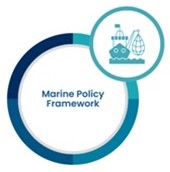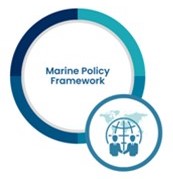India’s 7,517 km long coastline supports diverse and rich ecosystems ranging from mangroves, coral reefs, and beaches to seagrass meadows and estuaries. Crores of people directly or indirectly depend on the numerous ecosystem services that coastal and marine ecosystems offer, be it for livelihoods or recreation. Sadly, a myriad of factors such as indiscriminate fishing, quarrying, dredging, reclamation, pollution, and other anthropogenic activities threaten these seascapes. Subsequently, this impacts the people too.
It is thus, vital to understand the various laws and frameworks used to protect coastal and marine ecosystems and species.
Currently, the Wild Life (Protection) Act, 1972 (WLPA) is the most widely known and used legislation that protects India's marine and coastal ecosystems and species through the declaration of Marine Protected Areas (MPAs) and listing of important marine species within its schedules. However, other laws also provide for the protection and conservation of coastal and marine ecosystems and species. For instance, the Environment (Protection) Act, 1986 (EPA) and notifications under it allow for the restriction of industrial activities in the coastal regions. Under the Biodiversity Act of 2002, Biodiversity Heritage Sites may be declared in ecologically fragile or biodiversity-rich areas.
In this context, this interactive policy section paints a comprehensive picture of legal protection mechanisms to protect coastal and marine ecosystems and species since there is limited information on such laws, especially in a collated form. We have simplified India’s legal mechanisms for the protection of coastal and marine biodiversity into four thematic sections.
The 30x30 Target
Have you been wondering what the buzz around 30x30 (30 by 30) is all about?
30 x 30 is a global target for all governments worldwide to designate 30% of land and ocean areas as protected areas by 2030 (hence “30 x 30”). The 15th United Nations Biodiversity Conference of Parties (CoP) adopted the "Kunming-Montreal Global Biodiversity Framework" (GBF), aligning with Sustainable Development Goals (SDGs) and outlining a bold path toward global harmony with nature by 2050.
The GBF comprises 23 actionable global targets to be achieved, including Target 3 also known as 30x30, which aims to protect and conserve at least 30% of Earth’s land and oceans by 2030. The Target aims to ensure and enable the effective conservation and management of at least 30 percent of terrestrial, inland water, and coastal and marine areas that are rich in biodiversity, by 2030.
The target will benefit ecosystems and communities by recognising their rights, livelihoods, and their customary practices while ensuring that they are done sustainably in tandem with effective conservation outcomes.
Did you know India has a legal framework to guide conservation of marine life? The Marine Laws and Policies Framework is divided into four sections to facilitate an easy understanding and present a comprehensive picture of India's marine laws and policies.

The first section focuses on laws governing the protection of marine and coastal areas, including habitats and ecosystems.

The second section focuses on laws governing the protection of marine species.

The third section discusses the laws that regulate industrial and commercial activities impacting marine and coastal ecosystems.

This section will explore some of the important international treaties that India is party to.